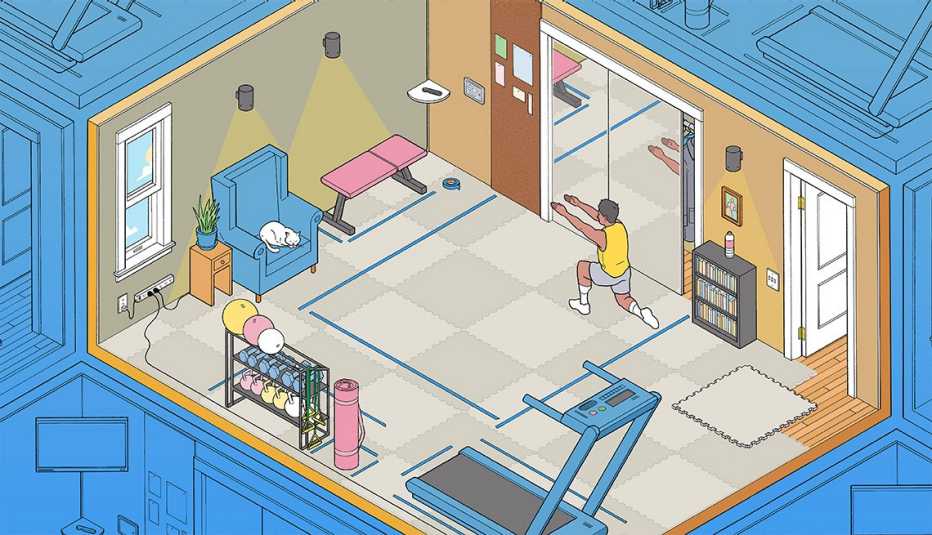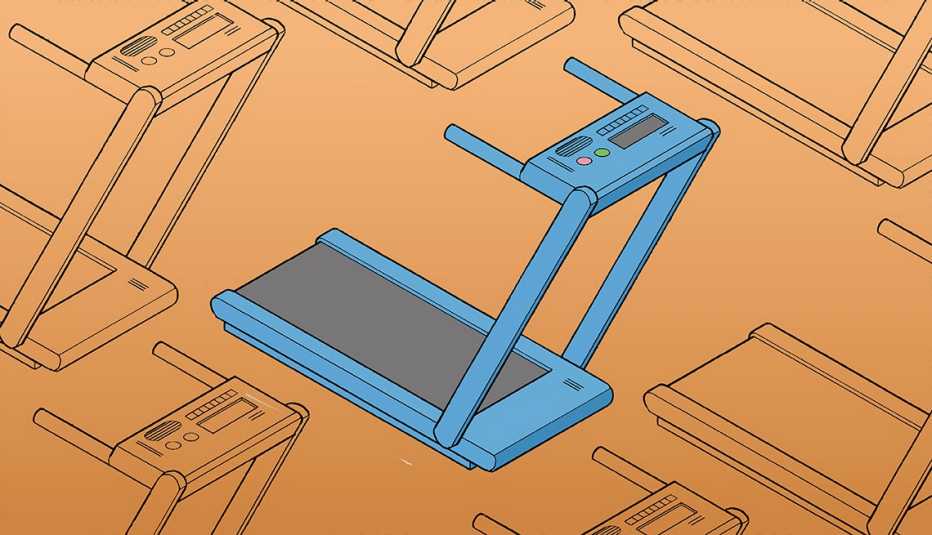AARP Hearing Center


It’s the new year and you’re ready to commit to getting back — or staying — in shape. One key to keeping that commitment? Convenience. The easier it is to get workouts done, the more likely you may be to keep doing them. And it doesn’t get more convenient than a home gym. A recent poll by consumer analytics platform CivicScience reports that at-home exercisers are 21 percent more likely than gym-goers to work out at least once a week.
But converting a spare bedroom or basement space into an inviting home gym isn’t as simple as setting up a treadmill and tossing a few dumbbells in the corner. “The more beautiful and pleasant and engaging a space, the more apt you are to use it,” says Steven Webber, associate professor of interior architecture and design at Florida State University.


Flooring
Hardwood is, well, too hard. You want flooring with some give — something that’s easy on your joints and able to absorb vibration and noise. Webber says vinyl flooring and linoleum, often used in kitchens, are good options. But he prefers interlocking rubber flooring tiles, which are easy to install and make your room look like a giant yoga mat. While carpet is soft and sound-absorbing, skip it, Webber says. It gets too worn too fast. (An exception can be made for carpet tiles, which can be easily replaced in sections.) And definitely avoid rugs; their propensity to shift and slide make them dangerous.


Walls
Nothing is less inspiring than a blank wall. So think child’s playroom: Use dry-erase paint or chalkboard paint, then write on the walls to track your exercise progress and write motivational messages, Webber advises. Or cover one wall with cork tiles or sheets, he says, “so you can pin things to it. Cork also absorbs sound.”
Another tip: Gyms usually have mirrors so you can observe your form as you exercise. So hang one or two large mirrors on the wall, or carefully lean up a floor-standing mirror, suggests New York City-based celebrity personal trainer Kacy Duke. This can make a smaller room appear open and spacious.






































































You Might Also Like
Smart Guide to Healthy Habits
From fitness goals to bedtime routines, we have tips that may help you live better
Top Tips for Finding Happiness
What foods to eat, embracing bright colors and more, our gladness gurus have strategies that may boost your mood
Free Pilates Classes
Grab a mat and join certified instructors from Pilates Anytime for classes good for all ability levels
AARP Members Edition
Your daily source for candid takes on life, comprehensive guides to living well, tips for saving money, inspiring travel, and more – only for AARP membersRecommended for You